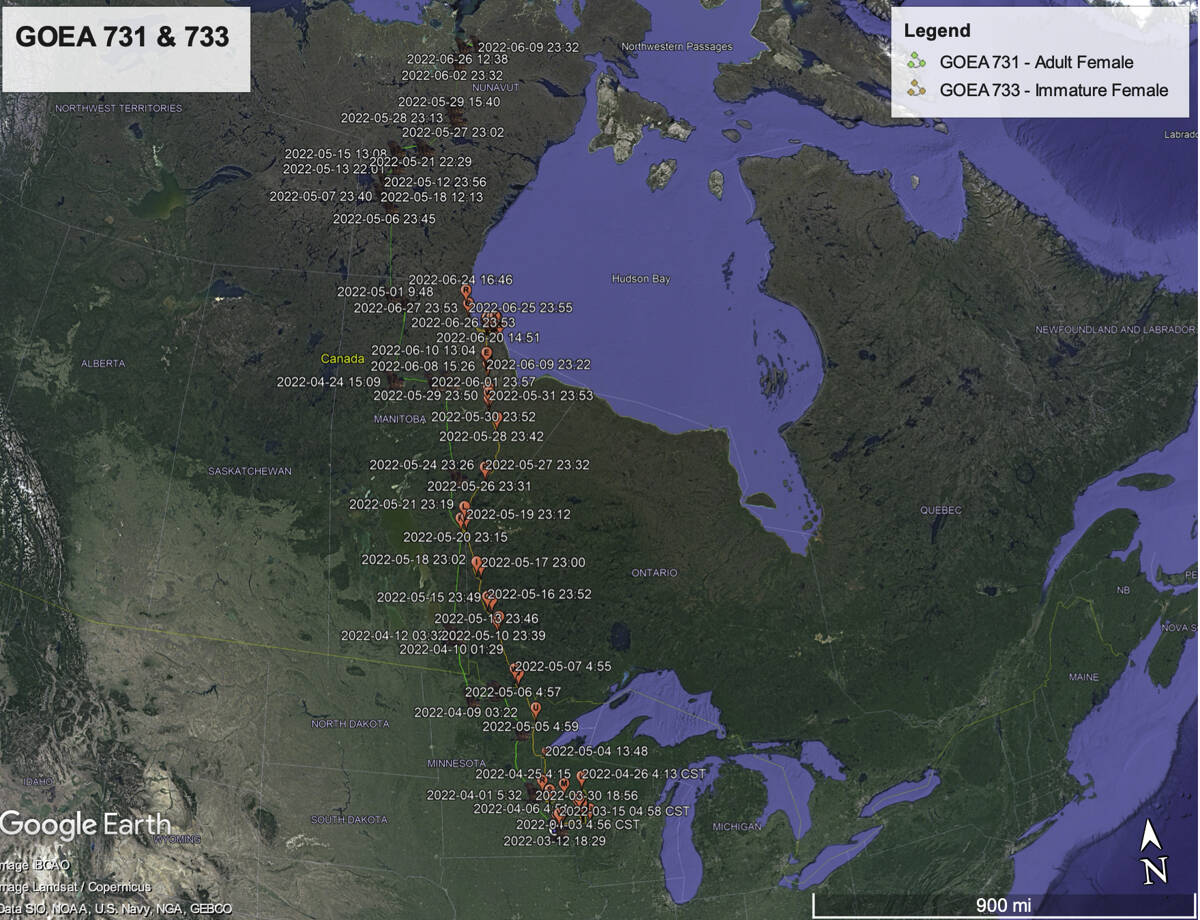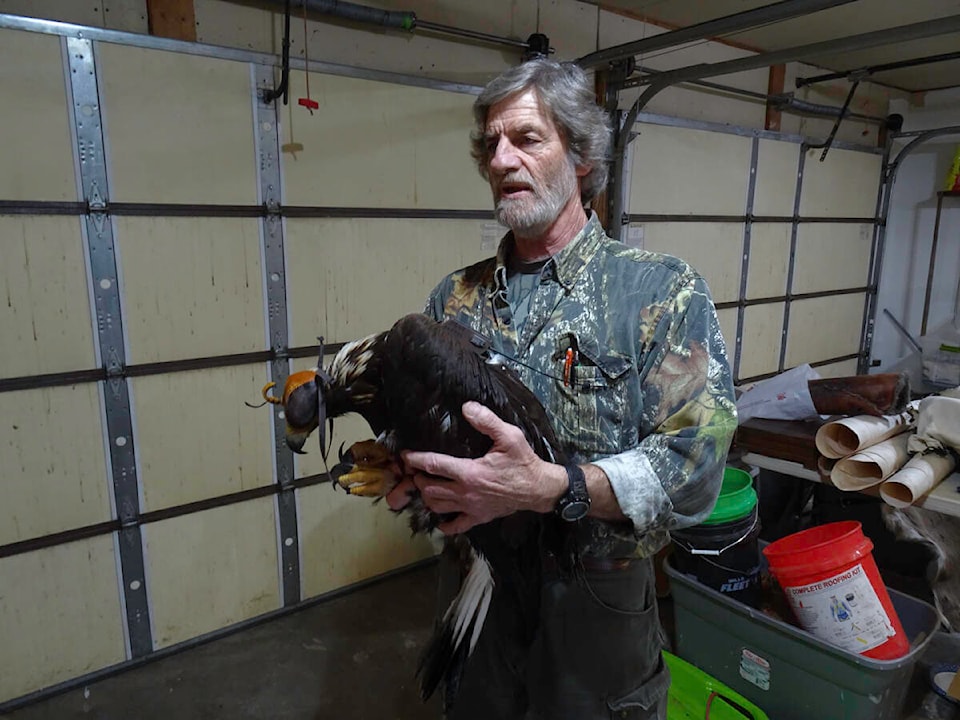How many eagles have you seen in the Kivalliq?
A couple of Facebook updates on the Baker Lake bulletin page from a Wisconsin, USA, wildlife biologist tracking the movement of a golden eagle excited many commenters.
Ryan Schmitz, assistant manager of the Raptor Resource Project in Wisconsin, posted in mid-July that an immature golden eagle he had been tracking had made its way about 2,200 km from its wintering grounds and was on the southeast end of Baker Lake. The eagle had been captured in western Wisconsin in February and is one of two goldens the Raptor Resource Project is following.
Commenters chimed in on their own eagle sightings in the area, with one suggesting they knew where some goldens nest. Others expressed interest and remarked that they never knew bald eagles and golden eagles were different species.
Schmitz explained on Facebook that there is a population of approximately 200 golden eagles in the “Driftless Area” of the Upper Midwest (parts of Wisconsin, Minnesota, Illinois and Iowa) and that little is known about this eagle population concerning their summer and winter areas and migration paths.
Brett Mandernack, manager of the Raptor Resource Project, told Kivalliq News that he has also been tracking bald eagles since 1998-‘99, and some of them summer in Nunavut.
“What brings them to Nunavut and the Hudson Bay area?” asked Mandernack rhetorically. “Thousands of years of doing so. It must suit them, as far as finding adequate food and having adequate time to raise a family to repeat the cycle. Got to be a tight window, though, with the ‘warm’ season being rather brief.”
He shared location data for a bald eagle he’s been tracking since 2015, which was a second-year bird at the time, meaning it hatched in 2013.
“He is not a breeding bird, and is quite the wanderer,” remarked Mandernack. “As you can see, he is no stranger to the Whale Cove and Rankin Inlet area and is currently just a few miles northeast of Rankin Inlet.”
Not all eagles become breeders once they hit sexual maturity, he said.
“Several continue to ‘float’ and do not stay in one place long enough to raise a clutch of young,” explained Mandernack, saying the bald eagle mentioned near Rankin Inlet was a perfect example of one such bird.
As for the goldens near Baker Lake, one was likely too mobile to be incubating eggs, according to Mandernack. The other is still a youngster that has taken its time to reach its summer range.
Mandernack said it’s interesting to speculate whether the younger golden is an offspring of the adult, as both were trapped in close proximity to each other last winter and now both are summering in a similar range in Nunavut.
“Without DNA evidence to show they are related, it is just speculation,” he said.
Mandernack said the project team would be happy to continue updating Nunavummiut on the golden eagles’ travels.
![]()

